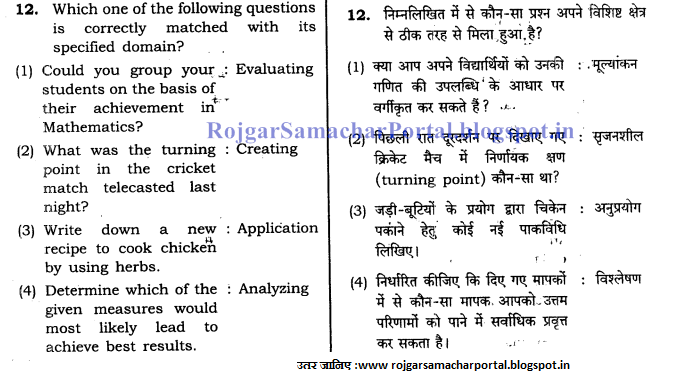CTET - Practice Question 2014
- Paper-1
QUESTION 1 .
Ans: 2
NOTES:
Ans: 1
Ans: 2
NOTES: Dewey's Theory
Dewey's thoughts on education, originally published in his 1938 work 'Experience and Education,' analyzed both traditional and progressive education. Traditional education's focus was more on curriculum and heritage; progressive education focused on the student's interest rather than that of the instructor or subject. In Dewey's opinion, neither of these schools of thought were sufficient. Dewey believed that traditional education was too strict and progressive education too spontaneous. He believed that traditional education left little regard for the learner's interests and progressive education was too individualized.
Continuity refers to the way experiences, both past and present, influence the future. Interaction refers to how one's current situation influences their experiences. This means that one's present experiences are a direct result of how their previous experiences interact with and influence their present situation. Confusing? Maybe... Simply put, this means that human experiences- past, present, and future- influence the capacity to learn.
John Dewey. Looking over 1938 work, Experience and Education. This video is a quick summary of Dewey's views on education and experiential learning. This lesson looks at the arguments between traditional and progressive extremes of education and offer a solution for what schools should be.
Ans: 4
Ans: 3
जरुर पढ़े : THEORY OF MULTIPLE INTELLIGENCES
Ans: 1
Ans: 4
Ans: 2
Ans: 4
Ans: 4
Ans: 1
Ans: 3
Ans: 3
Ans: 3
Ans: 1
Ans; 1
Ans: 1
Ans;1
Ans: 1
Ans: 3
Ans: 1
Ans: 2
Ans: 1
Ans 26: 2
Ans 27: 2
Ans 28: 3
Ans 29: 4
Ans 30: 1





























.png)

























0 comments:
Post a Comment